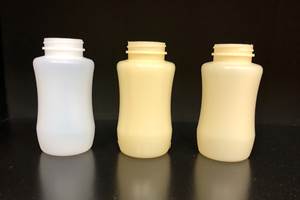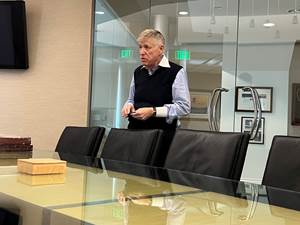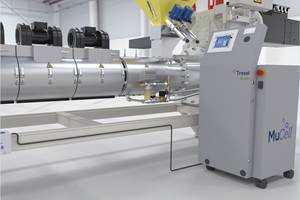New Vehicle Sales at All-Time High
Yet production is growing at a slower pace, a trend that is likely to continue.
In December 2016, new vehicle sales in the U.S. were 18,680,000 units (seasonally adjusted at an annual rate). That was the highest level for vehicle sales since July 2005. But the high level of new vehicle sales is not leading to accelerating growth in production. Let’s look at some of the leading indicators to see where the automotive industry might be headed in the next six to 12 months.
Real 10-Yr Treasury Rate. The real (inflation-adjusted) 10-yr U.S. Treasury bond interest rate was 1.23% in December 2016, which was an increase of 24 basis points (hundredths of a percent) from the previous month. This was the highest real 10-yr Treasury rate since last April. The nominal rate was 2.49%, which was the highest since September 2014. But the rate of inflation has been rising too. In December, the inflation rate was above 2% for the first time since June 2014. The increase in inflation was limiting the rise in the real 10-yr Treasury rate (the real rate is the nominal rate minus inflation). The year-over-year change in the real rate increased to -89 basis points. That was the second straight month of an increase. The increase in the year-over-year change in the 10-yr Treasury is likely to lead to a decline in new vehicle sales as financing becomes more expensive.
Real Motor Vehicle & Parts Consumer Spending. Despite the increase in the real 10-yr Treasury rate at the end of 2016, real motor vehicle and parts (MV&P) spending by consumers grew significantly in the fourth quarter of 2016. In December, MV&P consumer spending was 8.7% more than it was a year ago. That was the second fastest rate of growth since January 2015. And it was the fourth time in five months that the rate of change from the same month a year earlier was at least 4.5%. This is significant because the historic average for that rate of change is 4.2%. As a result, the annual year-to- date rate of growth accelerated for the third straight month to 2.9%, which was the fastest rate of annual growth since February 2016.
But if the change in the interest rate continues to rise, expect MV&P spending to grow at a slower rate around the second quarter.
Real Motor Vehicle & Parts New Orders. New MV&P orders grew 2.7% in December compared with one year ago. This was the third time in four months that new orders grew. However, the rate of growth from the same month a year earlier slowed noticeably since March 2016. Therefore, the year-to-date annual rate of growth in new orders decelerated to 2.1%. This was the ninth consecutive month of decelerating growth. And the annual rate of growth in December was the slowest since May 2010, which was the last time that the annual rate of change in real motor vehicle and parts new orders contracted.
Motor Vehicle & Parts Industrial Production. The growth rate in motor vehicle and parts production was quite strong in December 2016. Compared with one year ago, production grew 8.4%, which was the fastest rate of growth since February 2016. But the general trend has been slower growth in production since July 2014, which is likely to continue, given the trends in the interest rate and new orders.
ABOUT THE AUTHOR: Steven Kline Jr. is part of the fourth-generation ownership team of Cincinnati-based Gardner Business Media, which is the publisher of Plastics Technology. He is currently the company’s director of market intelligence. Contact: (513) 527-8800 email: skline2@gardnerweb.com; blog: gardnerweb.com/economics/blog
Related Content
How to Extrusion Blow Mold PHA/PLA Blends
You need to pay attention to the inherent characteristics of biopolymers PHA/PLA materials when setting process parameters to realize better and more consistent outcomes.
Read MoreUS Merchants Makes its Mark in Injection Molding
In less than a decade in injection molding, US Merchants has acquired hundreds of machines spread across facilities in California, Texas, Virginia and Arizona, with even more growth coming.
Read MoreFoam-Core Multilayer Blow Molding: How It’s Done
Learn here how to take advantage of new lightweighting and recycle utilization opportunities in consumer packaging, thanks to a collaboration of leaders in microcellular foaming and multilayer head design.
Read MorePaperless ‘Smart Factory’ Based on Automated Production Monitoring
Tier 1 automotive molder’s home-built production-monitoring and ERP systems, designed for “the little guy,” boost its efficiency rating and profits.
Read MoreRead Next
For PLASTICS' CEO Seaholm, NPE to Shine Light on Sustainability Successes
With advocacy, communication and sustainability as three main pillars, Seaholm leads a trade association to NPE that ‘is more active today than we have ever been.’
Read MorePeople 4.0 – How to Get Buy-In from Your Staff for Industry 4.0 Systems
Implementing a production monitoring system as the foundation of a ‘smart factory’ is about integrating people with new technology as much as it is about integrating machines and computers. Here are tips from a company that has gone through the process.
Read More.JPG;width=70;height=70;mode=crop)







